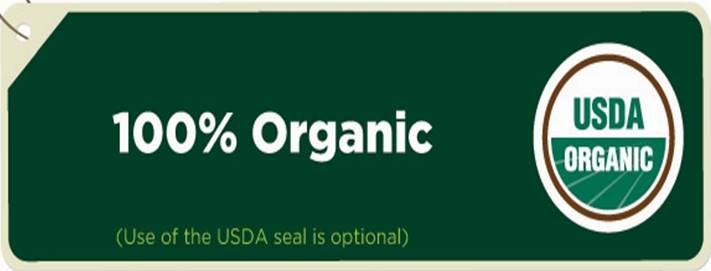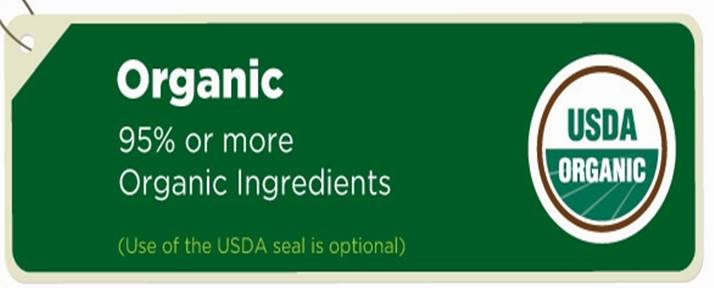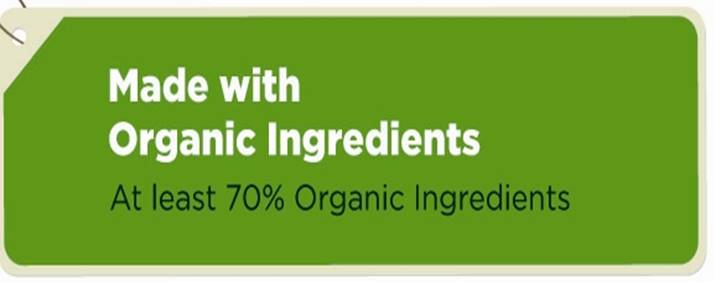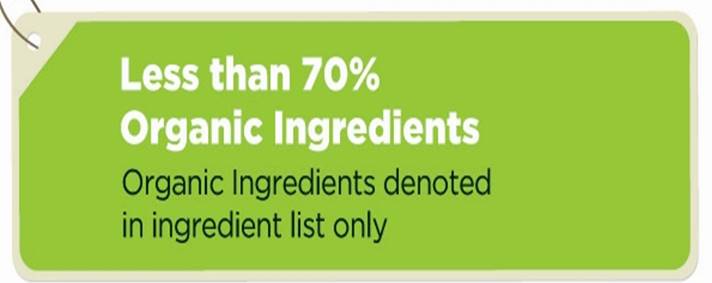False organic labeling and certificates are on the rise.
The organic food market is booming—and according to recent reports, so is organic labeling fraud. This is driven in large part by the fact that domestic demand for organic foods is outstripping domestic production of certain organic agricultural commodities, leading to an increase in imports of those products. According to the USDA Economic Research Service, tracked U.S. organic imports equaled $1.65 billion in 2016, up from about $670,000 in 2011. This rapid increase (and U.S. organic farmers’ inability to keep up with demand or compete with foreign sellers) has unfortunately led to a rise in fraudulently certified or falsely labeled “organic” agricultural imports.
Just last year, the Washington Post reported that a shipment of 36 million pounds of non-organic soybeans from Ukraine was labeled as organic. This was only one of three “organic” corn or soybean shipments that the Washington Post discovered were probably not organic.
This growing problem is important to food and agribusinesses companies that want to maintain integrity in their organic labels and supply chain, avoid overpaying for nonconforming goods, avoid negative publicity and regulatory investigation, ward off potential civil penalties under 7 U.S.C.A. § 6519 (providing for a $10,000 fine for knowingly selling or labeling a product as organic that does not comply with the law), or avoid class actions under state unfair competition laws.
Understanding the laws and regulations governing organic labeling and organic imports can help food and agribusiness companies protect themselves from unknowingly purchasing or selling fraudulently certified foods.
A brief primer on laws governing organic food labeling and imports
The National Organic Program (NOP) is housed within the USDA Agricultural Marketing Service (AMS). Under the Organic Foods Production Act of 1990 (OFPA), adopted as part of the 1990 Farm Bill, domestic and imported agricultural products may be sold or labeled as organically produced only if such products have been produced and handled under an organic certification program. Ten years later, in 2000, the USDA finalized regulations creating the NOP. With very few exceptions, food companies may only label raw or processed agricultural products as “organic,” if they have been produced and handled in accordance with the NOP regulations. 75 C.F.R. § 205.300. This generally means that these foods must have been produced and handled without the use of synthetic chemicals and in accordance with an organic plan agreed to by the producer, any handler of the product, and the certifying agent. 7 U.S.C.A. § 6504. In addition, organic products must not be commingled or contaminated with non-organic ingredients or materials that have not previously been approved for use in organic production.
Certifying agents can be private organizations, states, or even foreign organizations. These agents must be accredited by the USDA before they can certify producers and handlers. It is the responsibility of the organic producer or handler to select and hire a third party certifying agent.
The basics of organic labeling – 75 C.F.R. § 205.301
While the USDA does not currently include sample labels on its website, the Organic Trade Association provides samples for how the labels may look.
100% Organic claim:

If food companies want to claim a product is 100% organic, the product must contain 100% organically produced ingredients, including all processing aids, not counting added water and salt. The product may display the USDA organic seal and the seal of the certifying agent. The name of the certifying agent must appear on the information panel.
Organic claim:

If food companies want to claim a product is “organic,” the product must contain at least 95% organic ingredients, not counting added water and salt. The product must not contain added sulfites. The product may contain up to 5% of nonorganically produced agricultural ingredients which are not available in organic forms and/or which are substances designated “allowed” by the National List of Allowed and Prohibited Substances (found at 7 C.F.R. § 205.605). The product can display the USDA organic seal, seal of the certifying agent, and can display the term “organic” in the product name. The product can also display the percentage of organic ingredients. Note that percentage statements are limited in size and appearance by regulation. The ingredient list must modify all organic ingredients as such. The name of the certifying agent must appear on the information panel.
Made With Organic Ingredients claim:

If food companies want to claim a product is “made with organic [ingredients],” the product must contain at least 70% organic ingredients, not counting added water and salt. The product must not contain added sulfites (there is an exception for wine). The product may contain up to 30% nonorganically produced agricultural ingredients and/or other substances designated “allowed” by the National List of Allowed and Prohibited Substances. The product label may show the term “Made with organic [ingredient]” and may display the percentage of organic ingredients in the product. The product label may show the certifying agent seal, but importantly, the label may not use the USDA organic seal. The ingredient list must modify all organic ingredients as such.
No organic certification claim allowed:

Products containing less than 70% organic ingredients may not use the term “organic” on the primary display panel. These products may list organic ingredients on the information panel, but may not state that they are “certified” organic. “Made with” and percentage claims are also subject to further regulation on size and appearance of the claim.
Regulation of organic imports
Under the NOP, imports of organic food must be certified as organic, and the applicable certification program must be “at least equivalent to OFPA’s requirements.” The AMS is responsible for administering the organic trade agreements with foreign countries to ensure compliance with the OFPA and NOP regulations.
Imported agricultural products sold or labeled as organic in the U.S. must meet one of the following three criteria:
- They must be certified by an NOP-accredited certifying agent;
- They must be produced under an equivalency arrangement, which applies to foreign countries whose organic standards are at least equivalent to NOP standards; or
- They must be produced under a recognition agreement, which is used for foreign countries that do not have organic standards in place or whose organic standards are not equivalent to the NOP standards. Under this process, the foreign country must have a conformity assessment system that assures the food is produced in compliance with the OFPA and NOP regulations.
Regions that currently have equivalency arrangements with the U.S. are Canada, the European Union, Japan, Korea and Switzerland. The U.S. has recognition agreements with India, Israel and New Zealand.
What can food and agribusiness companies do to protect against receiving fraudulently labeled goods?
Given the increasing prevalence of organic fraud (especially in imported grains), food and agribusiness companies must be on the lookout for organic fraudsters.
Policies to detect and prevent fraud should include the following actions:
- Establish regular intervals for your import procurement team to review the NOP regulations, perhaps quarterly.
- If importing organic goods, attempt to source from countries with an equivalency arrangement or a recognition agreement.
- Pay attention to the identity of the certifying agent. If it is not on this list, then it’s not an accredited certifying agent. In addition: follow industry news to get information on which certifying agents are considered credible.
- Know your supplier—and your suppliers’ supplier—and check the Organic INTEGRITY Database to review the certification status of farms, businesses or other organic operations. Make this resource available to your import team.
- Demand supply chain transparency and supply integrity from all suppliers. This includes obtaining written documentation of the entire supply chain from your supplier and written assurances that the product was properly certified by an accredited agent. Consider also investing in a blockchain technology that electronically collects data about the supply chain.
- Pay attention to price. If an “organic” product significantly undercuts the organic market price, it may be too good to be true.
- Require written assurances that the agricultural product you import was not fumigated at the port of entry. If it was, do not sell or label those goods as “organic.” Oftentimes foreign agricultural products—even those grown organically—are fumigated at U.S. ports of entry if an inspection reveals pest or disease presence. Until recently, AMS had not established controls at ports of entry to identify, track, and ensure that treated organic products are not sold as such. If you find that a shipment of organic agricultural products has been irradiated or fumigated at port, those products should not be labeled, sold or represented as organic. This may become easier to determine, as AMS is currently working with the USDA’s Animal and Plant Health Inspection Service to develop mechanisms to track this.

